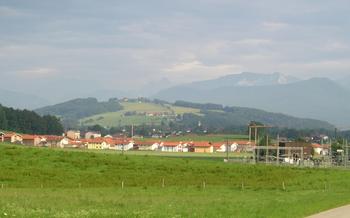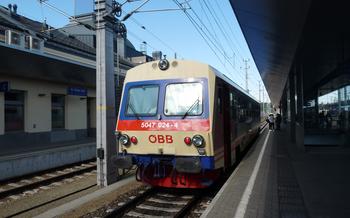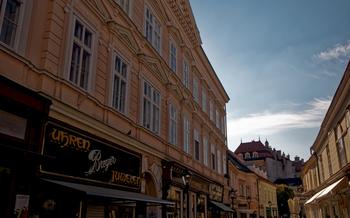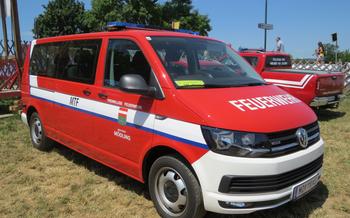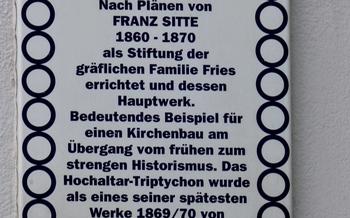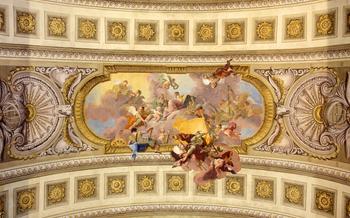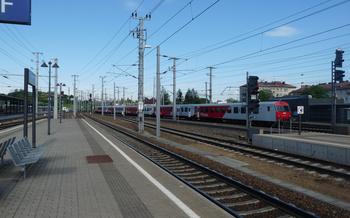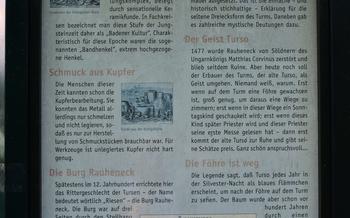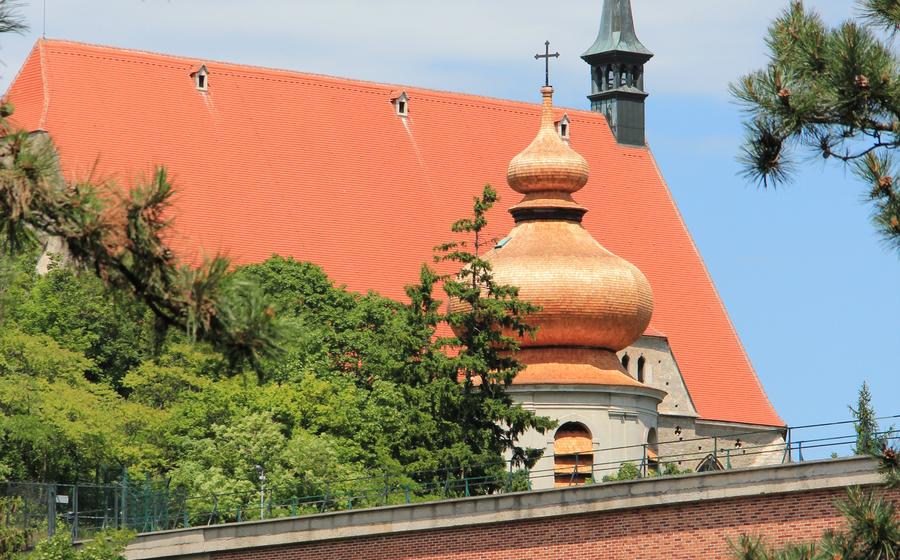
Schaubergwerk Grub
- A trip back in time: The Schaubergwerk Grub
- Getting there: How to reach the Schaubergwerk Grub
- Hours of operation and admission fees: Plan your visit
- Unveiling the treasures: Minerals and mining artifacts
- Exploring the depths: Guided tours through the mine
- Safety first: Preparing for the mine visit
- Following the miners' footsteps: Through the tunnels
- The heart of the mine: The mining chamber
- Underground wonders: The crystal grotto
- A Miner's Life: The Miners' Chapel
- The mining museum: Delving deeper into history
- Above ground attractions: The mining village
- Insider Tip: Unearth Hidden Treasures
A trip back in time: The Schaubergwerk Grub
Journey into the depths of the Schaubergwerk Grub, a historic mine that offers a captivating glimpse into the past. Once a bustling hub of mining activity, this underground treasure trove has been transformed into a museum, inviting visitors to experience the fascinating world of mining and uncover the secrets that lie beneath the surface.
Delve into the history of the mine, dating back to the Middle Ages, when silver and lead were extracted from these rich veins. Discover the ingenious techniques and equipment employed by miners centuries ago, demonstrating their resilience and determination in extracting valuable resources from the earth. Learn about the lives of these hardworking individuals, whose tireless efforts shaped the region's mining heritage.
Embark on a guided tour or explore the captivating exhibitions that showcase the wonders of the mine. Immerse yourself in the stories of the miners, their triumphs, and struggles, gaining a deeper appreciation for the challenges they faced in their pursuit of precious metals.
Getting there: How to reach the Schaubergwerk Grub
The Schaubergwerk Grub is conveniently located in the town of Mödling, just a short distance from Vienna.
To reach the mine by car, take the A2 Süd Autobahn and exit at Mödling. Follow the signs to the town center and then to the mine, which is located on the outskirts of Mödling.
Public transportation is also a good option. Take the S-Bahn (commuter train) to Mödling station and then catch the bus to the mine. The bus stop is located right outside the train station.
The Schaubergwerk Grub is wheelchair and stroller accessible. There is a small parking lot at the mine, but it can get crowded during peak season. It's recommended to arrive early or use public transportation to avoid parking difficulties.
Hours of operation and admission fees: Plan your visit
Ensure a smooth and enjoyable visit to the Schaubergwerk Grub by planning your trip around its operating hours and admission fees. The mine is open to the public from March to November, with varying hours depending on the season. It is closed on Mondays and during the winter months. Before embarking on your journey, check the official website for the most up-to-date information on opening hours and days to avoid disappointment.
Admission fees are charged for adults, children, and families. Standard tickets provide access to the guided tour and admission to the mining museum. There are also discounted rates for groups and concessions for students, seniors, and families. To secure your spot, consider booking your tickets in advance, especially during peak tourist season. Advance booking can be done online or by phone. Walk-in visitors are also welcome, but be prepared for potential queues and limited availability during busy periods.
Unveiling the treasures: Minerals and mining artifacts
The Schaubergwerk Grub boasts a remarkable collection of minerals and mining artifacts, offering visitors a glimpse into the geological wonders hidden beneath the surface. Among the highlights are the glistening crystals that adorn the walls of the mine, showcasing a variety of colors and formations. These natural treasures provide a fascinating insight into the geological processes that have shaped the region over millions of years.
In addition to the minerals, the mine also displays a range of mining tools and equipment used by miners throughout history. From simple hand tools to more complex machinery, these artifacts provide a tangible connection to the lives and work of the miners who once toiled in these tunnels. Visitors can marvel at the ingenuity and craftsmanship of these tools, which were essential for extracting the valuable minerals from the earth.
To enhance the visitor experience, the Schaubergwerk Grub features interactive exhibits that allow visitors to engage with the mining process in a hands-on way. These exhibits provide a deeper understanding of the challenges and techniques involved in mining, making the visit both educational and entertaining.
For those who wish to take home a piece of the mining experience, the mine also operates a mineral shop. Here, visitors can purchase a variety of minerals, crystals, and souvenirs, including jewelry, gemstones, and decorative items. These treasures make for a unique and memorable memento of a visit to the Schaubergwerk Grub.
Exploring the depths: Guided tours through the mine
The Schaubergwerk Grub offers a variety of guided tours that cater to different interests and time constraints. Each tour is led by knowledgeable guides who provide insights into the history, geology, and mining techniques of the mine.
The Standard Tour is a comprehensive exploration of the mine, lasting approximately 5 hours. This tour takes visitors through the main tunnels, the mining chamber, and the crystal grotto, showcasing the highlights of the mine.
For those seeking a more in-depth experience, the Extended Tour is a 5-hour journey that delves deeper into the mining history and techniques. Visitors will witness live demonstrations of mining methods and gain a deeper understanding of the challenges faced by the miners.
For thrill-seekers and adventurers, the Adventure Tour is a unique opportunity to explore the mine's hidden passages and abandoned tunnels. This 3-hour tour involves crawling, climbing, and navigating tight spaces, revealing the secrets of the mine's past.
All tours require advance reservations, especially during peak season. Visitors can book online or by phone to secure their spot. Walk-in availability is limited, and tours are offered in German and English.
Safety first: Preparing for the mine visit
Ensuring a safe and enjoyable visit to the Schaubergwerk Grub is of utmost importance. Before venturing into the mine, it is essential to be prepared with the appropriate clothing and footwear. Sturdy shoes or hiking boots are highly recommended for navigating the uneven terrain and slippery surfaces. Loose clothing and dangling accessories should be avoided to prevent entanglement with mining equipment or cave walls.
Upon arrival at the mine, visitors are provided with safety helmets and headlamps. These helmets protect against potential falling debris or bumps against low ceilings. The headlamps illuminate the dark tunnels and allow visitors to see the intricate details of the mine.
The lighting conditions inside the mine are generally dim, creating a unique atmosphere. However, it is important to note that visibility may be limited in certain areas, especially in narrow passages or deep chambers. Visitors should stay close to their tour group and follow the instructions of the guides to ensure their safety.
In case of an emergency, such as a sudden rockfall or power outage, clear evacuation routes are marked throughout the mine. Visitors should familiarize themselves with these routes during the safety briefing before the tour. Emergency lighting systems are also in place to guide visitors to safety in the event of a power failure.
Following the miners' footsteps: Through the tunnels
As you venture deeper into the mine, the tunnels become narrower and the ceilings lower, creating a sense of intimacy and claustrophobia. The walls are adorned with minerals, fossils, and artifacts that tell the story of the miners who worked here.
Each tunnel offers its own unique discoveries. You might come across a vein of sparkling crystals, a fossilized leaf, or an old mining tool that has been left behind. These remnants of the past provide a glimpse into the lives of the miners and the challenges they faced.
The tunnels are not without their obstacles. Some passages are so narrow that you have to squeeze through, while others are blocked by fallen rocks or debris. These challenges add to the adventure of the tour and give you a sense of what it was like to be a miner working in these conditions.
The heart of the mine: The mining chamber
The mining chamber is the largest and most impressive chamber in the Schaubergwerk Grub. It is here that visitors can truly appreciate the scale and complexity of the mining operations that once took place. The chamber is dominated by a massive rock face, where miners once extracted valuable ores. Visitors can see the drill holes and other marks left by the miners, as well as the various tools and techniques they used.
In the mining chamber, visitors can also learn about the different methods used to extract and process the ore. They can see the ore carts that were used to transport the ore out of the mine, as well as the machines that were used to crush and process it. The mining chamber is a fascinating glimpse into the history of mining and a reminder of the hard work and dedication of the miners who worked here.
Underground wonders: The crystal grotto
Amidst the depths of the Schaubergwerk Grub, a hidden gem awaits discovery: the crystal grotto. This natural chamber is adorned with sparkling minerals and stunning crystal formations, creating a mesmerizing spectacle that transports visitors to a realm of subterranean beauty.
The walls of the grotto glitter with a myriad of colors, reflecting the light from the miners' lamps. Stalactites and stalagmites, formed over millennia by the slow drip of water, create intricate patterns and shapes that resemble a frozen waterfall. The air is filled with a sense of awe and wonder as visitors marvel at the delicate and fragile formations that have been preserved for centuries.
Photography enthusiasts will delight in capturing the ethereal beauty of the crystal grotto. The interplay of light and shadow, the vibrant colors, and the unique textures of the crystals create a photographer's paradise. Tripods and flash photography are permitted, allowing visitors to immortalize their visit and share the wonders of the underground world with others.
A Miner's Life: The Miners' Chapel
In the depths of the Schaubergwerk Grub, a sacred space awaits—the miners' chapel. This humble sanctuary served as a beacon of hope and solace for the miners who toiled in the darkness. Built by the miners themselves, the chapel exudes an aura of devotion and resilience.
Step inside, and you'll be transported back in time. The air is thick with the scent of incense, and the flickering candles cast a warm glow on the simple altar. Statues of patron saints, weathered by time, stand guard over the faithful.
For the miners, faith was an essential source of strength and comfort. They would gather here before descending into the mine, praying for protection and guidance. The chapel was also a place of remembrance, where they honored those who had lost their lives in the treacherous depths.
Today, the miners' chapel stands as a testament to the unwavering spirit of those who worked in these mines. It's a reminder of the challenges they faced, the risks they took, and the deep sense of community that bound them together.
The mining museum: Delving deeper into history
The Schaubergwerk Grub also houses a comprehensive mining museum that takes visitors on a journey through the rich history of mining in the region. Through engaging exhibits, the museum showcases the evolution of mining techniques, the tools and machinery used over the centuries, and the challenges faced by miners. Visitors can explore displays of mining equipment, documents, and photographs that provide a glimpse into the lives and working conditions of miners in the past. Interactive exhibits allow visitors to experience hands-on activities, such as panning for gold or operating mining machinery, gaining a deeper understanding of the processes involved in mining. The mining museum is an excellent resource for anyone interested in learning more about the history and cultural significance of mining in the region.
Above ground attractions: The mining village
The mining village that surrounds the Schaubergwerk Grub is a living testament to the region's rich mining history. Stroll through its cobblestone streets and admire the well-preserved miners' cottages, each with its unique charm and stories to tell.
Visit the local museum to delve deeper into the village's past, where you can see exhibits on mining techniques, the lives of miners and their families, and the social and economic impact of mining on the community.
For a taste of traditional Austrian cuisine, stop by one of the village's cozy restaurants or cafes. Indulge in hearty dishes made with local ingredients, and soak up the warm and welcoming atmosphere.
Don't miss the opportunity to visit the village church, a beautiful example of Baroque architecture. Inside, you'll find stunning frescoes and intricate carvings that depict scenes from the lives of miners and their patron saints.
Insider Tip: Unearth Hidden Treasures
Beyond the main attractions, the Schaubergwerk Grub holds secret spots that offer unique experiences for adventurous visitors. Keep an eye out for the hidden chamber, accessible through a narrow passage, where you can discover rare and stunning mineral formations. Photography enthusiasts will delight in capturing the vibrant colors and intricate textures of the crystals, creating lasting memories of your subterranean exploration.
Listen closely to the tales and legends whispered within the mine's walls. Stories of brave miners, hidden treasures, and ghostly apparitions add an air of mystery to your visit. Ask your guide about local folklore and let your imagination run wild as you wander through the tunnels, feeling the presence of those who came before you.
